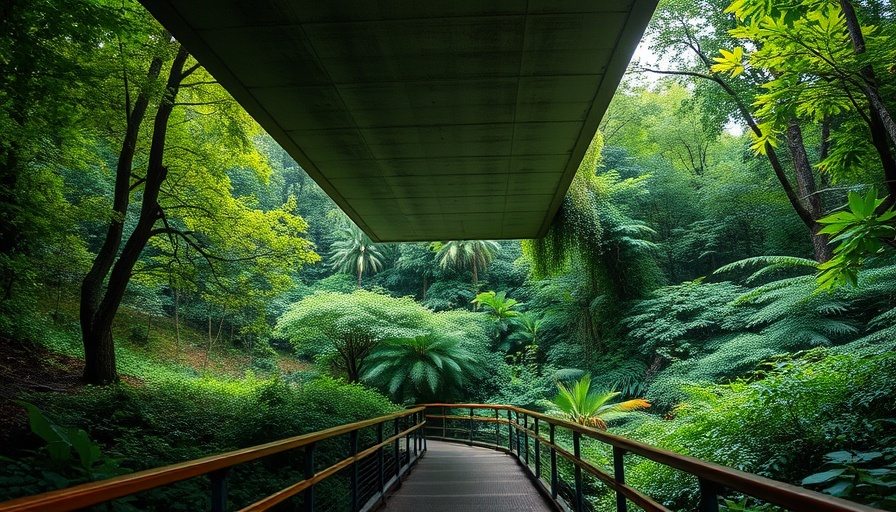
Wildlife Underpasses: A Game Changer for Amphibian Safety
The lives of amphibians like frogs and salamanders are increasingly at risk due to human activities, particularly road construction. A recent groundbreaking study published by researchers from the University of Vermont offers new hope in this ongoing issue, showing that wildlife underpasses can help in significantly reducing amphibian deaths. The findings, which showcase an impressive 80.2% decrease in mortality rates, highlight the urgent need for infrastructure that supports wildlife conservation.
Understanding the Impact of Roads on Amphibians
Amphibians are particularly susceptible to road mortality because they often migrate to breed, crossing roads that disrupt their natural routes. Research conducted over a decade by local scientists and community members indicates that roads not only kill the animals but also sever critical migration corridors essential for their survival. A healthier underpass system could reinstate safe passage for these creatures, fostering ecological balance.
Revolutionary Findings from the Vermont Study
In an innovative study, researchers monitored the amphibian population in Monkton, Vermont, before and after the construction of wildlife underpasses. From 2011 to 2015, they noticed a grim reality where nearly 70% of the surveyed frogs were already dead before any mitigation strategies were introduced. Following the installation of the underpasses, the same areas witnessed a remarkable reduction to 94% mortality rates when climbing amphibians were omitted, suggesting that these tunnels are not only effective but critical.
Designs That Matter: The Effectiveness of Underpass Structures
A pivotal element of the study was the design of the underpasses themselves. Factors such as wall height, angle, and materials greatly influence their success in guiding amphibians safely across roads. As Matthew Marcelino, the lead author of the study, indicates, thoughtful design can optimize these structures for their intended purpose. This echoes practices in other regions where wildlife underpasses have been successfully implemented, proving that a well-planned infrastructure can protect sensitive wildlife species.
Why This Matters Now More Than Ever
Considering the ongoing threats of habitat loss, climate change, and the decline of amphibian populations globally, it has become increasingly essential to devise concrete solutions. As amphibians are indicators of environmental health, their survival can reveal much about our ecosystem's status. Implementing wildlife underpasses can serve dual purposes: safeguarding amphibians while contributing to broader ecological conservation.
Community Involvement: A Key to Success
The success of wildlife underpasses is not just about engineering but also community engagement. Local residents participated in the research process, emphasizing that collective efforts are crucial for sustainable biodiversity. Building a stronger connection between the community and its natural wildlife can help cultivate awareness, fostering a culture of conservation.
What’s Next? Future Directions for Wildlife Protection
This pioneering research leads us to contemplate further developments in wildlife conservation strategies. Advocating for more underpasses and similar structures could pave the way not only for the protection of amphibians but also for other species facing road mortality. It begs the question: what will we prioritize in our infrastructure projects—human convenience or ecological preservation? The answer lies in thoughtful discussions and actions taken today.
As we continue to explore solutions for coexisting with our natural world, let’s not forget the vital role we play in ensuring that all creatures, big or small, have safe passage on our planet. The success stories from Vermont should inspire similar efforts elsewhere, reminding us of the importance of a collaborative approach to environmental conservation.
 Add Row
Add Row  Add
Add 




Write A Comment